Dell Zino HD 410 HTPC Review
by Ganesh T S on February 19, 2011 7:08 AM EST- Posted in
- HTPC
- Dell
- AMD
- Media Streamer
- ATI
The Zino 410 HD HTPC is primarily built out of notebook components, and it is not possible for the average enthusiast to build such a system with off-the-shelf components. The only non-notebook component in the whole system was the hard disk, which we will note further down in this section.
Motherboard & Chipset : mini-ITX AMD M880G + SB820 Southbridge
The motherboard used in the Zino 410 HD HTPC is based on AMD's mainstream Danube notebook platform. The M880G chipset has the option of an integrated 4250 GPU, which is not used in our system. It provides support for upto 6 SATA ports, two of which are used internally by the Blu-Ray drive and the hard disk, while two make an appearance in the form of eSATA. The SPDIF and analog audio output are driven by the Realtek ALC662 audio codec chip.
The mini PCI-E slot is taken up by the Dell WLAN 1520 802.11n card which is capable of 300 Mbps. The two antennae from the card are wired in such a way as to come in between the top lid and the intermediate panel separating it from the rest of the computer.
The underside of the motherboard has a MXM graphics slot and another DIMM slot in addition to the one available on the top side.
CPU : AMD Phenom II X4 P940 @ 1.70 GHz
Compared to the ASRock Core 100 and Vision 3D which went in with 35W TDP processors, the Zino 410 HD HTPC comes with a 25W TDP AMD Phenom II X4 P940. This TDP is a result of the low clock rate (1.7 GHz) at which the processor runs. Manufactured in a 45nm process, the processor has 4 cores running a total of 4 threads. Though the processor has 512 KB of L1 cache and 2M of L2 cache, there is no L3 cache unlike the Phenom desktop processors.
GPU : ATI Mobility 5450 MXM
The only discrete GPU option in the Zino 410 series is the Mobility 5450. The MXM module is mounted on the underside of the motherboard. It is the 40 nm Park Pro GPU clocked at 675 MHz, and has 1 GB of DDR3 memory.
With a rated power consumption of 11 W, it doesn't require a complicated cooling solution like what the GT425M warranted in the ASRock Vision 3D.
DRAM : Samsung's 1 x 4GB DDR3 SO-DIMM @ 1333 MHz + Hynix's 1 x 2GB DDR3 SO-DIMM @ 1333 MHz
The Zino 410 ships with more RAM than necessary for HTPC purposes right now. We have two RAM sticking slots. The one on the top side of the motherboard was populated with Samsung's K4B2G0846C DRAM chips. On the underside, we have 2GB of Hynix's HMT325S6BFR8C DRAM chips running with the same specifications as the Samsung chips.
Hard Disk : Western Digital Caviar Black 750GB 7200 rpm 3.5"
We were quite surprised to find a 3.5" hard drive inside the unit. Considering that the rest of the components are from notebook platforms, a 2.5" hard drive would have made much more sense.
The Caviar Black 7200rpm is a well reviewed hard drive and provides more than acceptable performance for a HTPC. However, its power consumption profile only makes the thermal design (about which we will talk in the next section) more challenging.
Optical Disk Drive : Htachi-LG Blu-Ray / DVD RW Tray Loading Drive
The Zino 410 ships with the Hitachi-LG CT10N Blu-Ray / DVD RW tray loading drive.
A slot loading drive would have made the unit appear better, but that is a minor quibble which doesn't affect the functionality of the system.
Keyboard / Mouse / Remote
The Zino 410 also comes with a wireless keyboard and mouse (other options are also available) and a MCE remote. Batteries are also included.
The remote is exactly the same as the one which ships with the ASRock Vision 3D, only a different colour. The wireless keyboard / mouse combo adds $75 to the cost right now. Compared to some of the deals which keep going on for these wireless accessories, I would strongly recommend purchasing them separately. Quality of the wireless keyboard / mouse is no great shakes, and it just gets the job done. On a HTPC where you might not spend much time typing, it is good enough.
The cost of the review unit, when configured with the same components on Feb 17, 2011 was $775 + taxes. At this price, it is smack in the middle between the ASRock Core 100 and ASRock Vision 3D, the other SFF HTPCs in this segment. In the next few sections, we will check out how the Zino 410 fares in our tests.


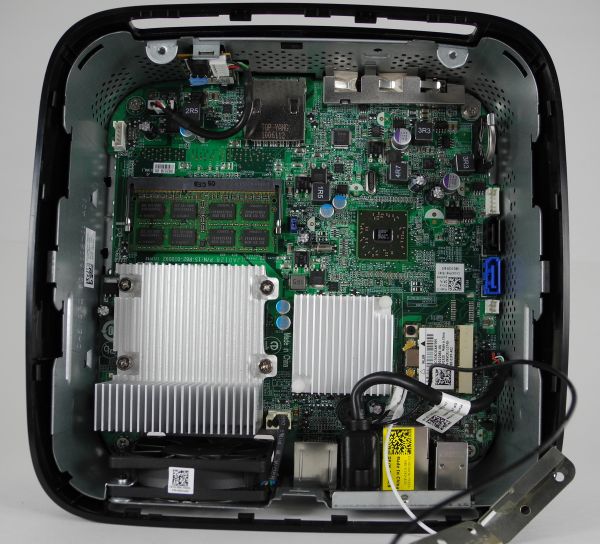
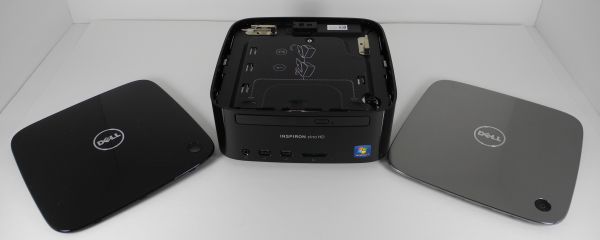

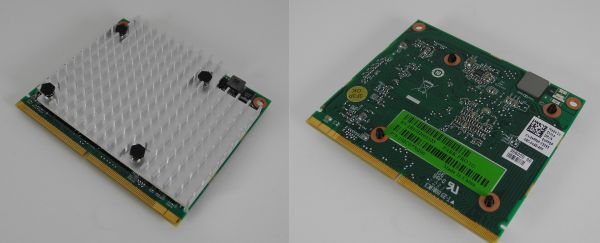

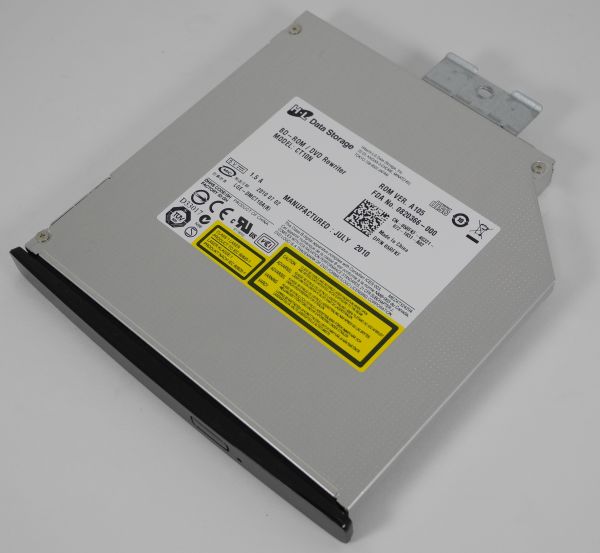
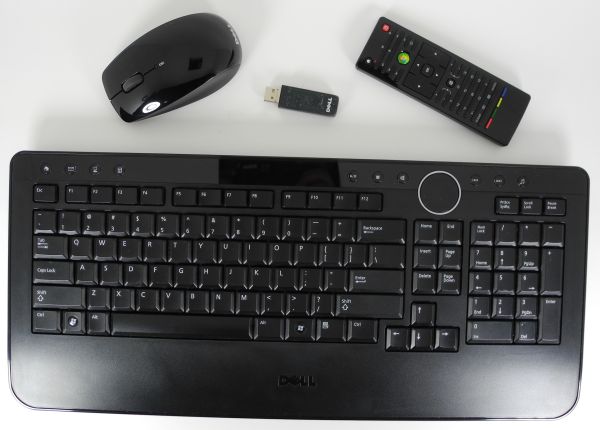








69 Comments
View All Comments
plewis00 - Saturday, February 19, 2011 - link
I agree with you and was about to post this myself.If someone really wants a 2.5" hard disk why can't they use an adapter and remove the existing 3.5" unit. I bought a 2TB hard disk the other day for £60 (I'm in the UK), but that same amount of money would buy you a 500 or 640GB 2.5" model so I know what I'd rather have.
I'd actually say rather than a complaint, Dell should actually be praised for fitting a 3.5" drive in there.
JNo - Saturday, February 19, 2011 - link
Absolutely agree. I think you're analysis that 2.5" would be better is disappointing Ganesh. And I highly doubt that an SSD boot drive option would be beneficial to many people. This is an HTPC after all and affordability is key for what is a secondary PC.I have an Xtreamer (google it) and it cost only £99 and plays every hi def file(s) I've chucked at it including mkv, ts, blu-ray file structures and much more and supports hi def sound outputting as well. It is fanless too. In fact unless you want PVR functionality / internet too, it makes more expensive HTPCs redundant.
Only disappointment is that it only fits a 2.5" drive and the largest (at the time) 500Gb drive I put in was as much as a 1.5TB drive eco/green drive. And the new 3.5" eco/green drives are just as quiet as their 2.5" brethren. I think most people savvy enough to know they need an HTPC tend to have very large music / video collections so size is a big deal.
ganeshts - Sunday, February 20, 2011 - link
The Caviar Black 750 GB is specified to have a power consumption at full load of 8.4W [ http://www.wdc.com/en/library/sata/2879-701276.pdf ].The Scorpio Black 750 GB (2.5", 7200rpm) is specified to have a power consumption of 1.75W when active [ http://www.wdc.com/en/products/products.aspx?id=13... ]
My belief is that the extra ~7W could have been devoted to a better discrete GPU rather than having a 3.5" hard drive.
Our well reviewed ASRock Vision 3D and Core 100 both have 2.5" hard drives, and I have hardly seen any reader / reviewers on other sites complain.
Also, people savvy enough to think they need a HTPC also have an external storage solution (storage array or NAS), and the hard disk on the HTPC is just a temporary 'staging' ground.
I still stand by my suggestion to Dell to move to a 2.5" hard drive for the next generation Zino.
Zoomer - Wednesday, March 2, 2011 - link
I agree with taltamir on this. There is simply no reason to use 2.5" drives when there is space for 3.5". Some may buy this and use local storage. Even if they don't it's still cheaper to put a 3.5" in.Noise, most if not all HDDs can be set to reduce noise. Acoustic Managemet or something like that.
The 2TB WD caviar green only requires 4.5 W when reading/writing. That's just 2.75 W, and barely worth considering.
Maybe you can push dell to give people a choice. WD Green, Caviar black, or the 2.5" black. Why not the momentus XT?
JWade - Saturday, February 19, 2011 - link
I got the 410 to upgrade from the 400hd, i like it alot better. i got the dual core one not the quad core. it does everything i need it to and then some.I cant hear it make any noise at all, even when playing games with it. I use it with my 42" tv.
something of note, Dell did make an atom version of the Zino too.
ganeshts - Sunday, February 20, 2011 - link
Yes, I remember the Atom Zino.. But it wasn't called the Zino HD. Thanfully they moved away from the anaemic Atom for their first Zino HD.The first Zino HD was the Zino 400 and this is the second generation.
Glad to hear you like the Zino 410. It is a pretty good system for the price, and depending on your usage scenario you probably won't even notice the shortcomings!
Bignate603 - Saturday, February 19, 2011 - link
I see a huge amount of HTPCs without the option for a TV tuner. For something that claims to be a HTPC it seems like a pretty blatant omission. It should at least be an upgrade you could order with it.Taft12 - Saturday, February 19, 2011 - link
http://www.newegg.ca/Product/Product.aspx?Item=N82...hvakrg - Sunday, February 20, 2011 - link
Well, if you use a good HTPC program like Mediaportal you don't need tuner in all your HTPCs, all you need is a TVserver. That can then feed TV to all your HTPC clients around the house. It's a great way to do it because you won't have to pull coax to all your rooms.myangeldust - Saturday, September 10, 2011 - link
HDHomeRun dual tuners. Placed near your TV antenna or in your coaxial closet and connected to your home network. Any TV in the house could become an HTPC by simply installing the tuner's device driver. Fully compatible with Windows Media Center.